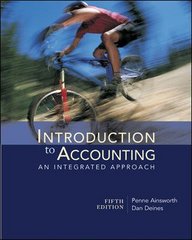Question
Case Study - Rio Tinto destruction of Juukan Gorge caves in 2020. Read the following excerpts from recent news articles relating to this event in
Case Study - Rio Tinto destruction of Juukan Gorge caves in 2020.
Read the following excerpts from recent news articles relating to this event in Australia in 2020, and then choose to discuss ONE of the following questions.
(Note: the dates are not important but provided to show the sequence of the reports. You may choose to do some additional research of this issue but is not essential. If you do, it is recommended that you provide the reference links in your submission.)
May 28, 2020
Juukan Gorge caves, located in the Pilbara region of Western Australia, were destroyed by Rio Tinto explosions during mining activities in May 2020. Rio Tinto confirmed the destruction. Juukan Gorge 'hosts culturally significant sites dating as far back as 46,000 years, including two ancient rock shelters'.
'Part of the world's oldest continuous living culture has been destroyed after mining giant Rio Tinto detonated explosives on the lands of the Puutu Kunti Kurrama and Pinikura (PKKP) Peoples in Western Australia's Pilbara region.' (National Indigenous Times, May 2020)
(Source: Hannah Cross, , 'Traditional owners distraught after destruction of 46,000-year-old rock shelters', National Indigenous Times)
Sept 11, 2020
Rio Tinto Chairman, Simon Thompson, confirmed that three senior executives resigned 'by mutual agreement':
"... shareholder concerns played a significant role in the eventual decision to part ways with the three executives who were seen as directly accountable for the Juukan Gorge blasting .... We have listened to our stakeholders' concerns that a lack of individual accountability undermines the group's ability to rebuild that trust and to move forward to implement the changes identified in the board review."
Investor groups pointed to the 'significant reputational damage' resulting from failures within the company, including Simon O'Connor, chief executive of Responsible Investment Association Australasia (RIAA):
"This tragic event has uncovered systemic issues around how mining companies approach matters relating to cultural heritage, including how they engage with traditional owners ... Many responsible investors will be scrutinising much more closely the activities of all resources companies, to seek assurance that there are rigorous processes and practices in place which can prevent an event like this happening again in the future."
(Source: David Chau, Michael Janda , 'Rio Tinto boss Jean-Sebastien Jacques quits over Juukan Gorge blast', ABC News)
Sept 12, 2020
Production pressure and weakness in organisational structure blamed for Rio Tinto's destruction of Juukan Gorge caves. Extreme production pressure was identified as a leading cause:
'The iron ore in the vicinity of the caves was very high grade and the company needed as much of it as possible to mix with other grades so as to supply the market with its trademarkPilbara blend. Its reputation as a reliable supplier depended on it. It was authorised under West Australian law to mine the area, even though this would destroy the caves, and it intended to exercise this legal right, regardless of any opposition. ' (The Conversation, September 2020)
Also blamed for the failure, was the segmented organisational structure made up of disparate product divisions:
'Its product divisions iron ore, aluminium, copper and diamonds, minerals and energy operate as autonomous business units with relatively little control from the corporate centre. When things go well, such an organisational structure is highly profitable for the corporation as a whole, because it leaves each product division free to take advantage of whatever opportunities there are in its particular market.But there is a downside. It leaves the corporation vulnerable to poor decision making by any one of its product divisions, decisions that may have disastrous human and environmental consequences that threaten thesocial licenseof the whole corporation.
The organisation structure also contained several functional lines in which Indigenous relations became grouped with other interests under 'corporate relations', which can be seen as sending a clear signal of its relative lack of importance.
In short, the Indigenous relations function failed dismally to alert top management because it had lost its influence and beenswallowedby a corporate relations function with a much wider remit.' (The Conversation, September 2020)
(Source: Andrew Hopkins and Deanna Kemp , 'Has Rio Tinto learnt its lesson from the destruction of the Juukan Gorge caves?', The Conversation)
i.How did the Juukan Gorge caves destruction threaten Rio Tinto's implied social contract? Discuss in relation to legitimacy theory.
Step by Step Solution
There are 3 Steps involved in it
Step: 1

Get Instant Access to Expert-Tailored Solutions
See step-by-step solutions with expert insights and AI powered tools for academic success
Step: 2

Step: 3

Ace Your Homework with AI
Get the answers you need in no time with our AI-driven, step-by-step assistance
Get Started


